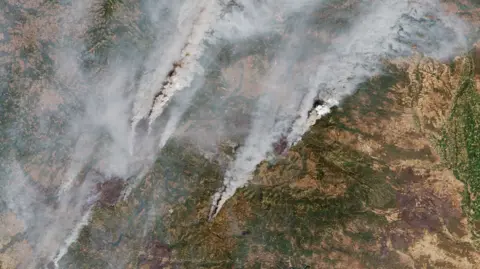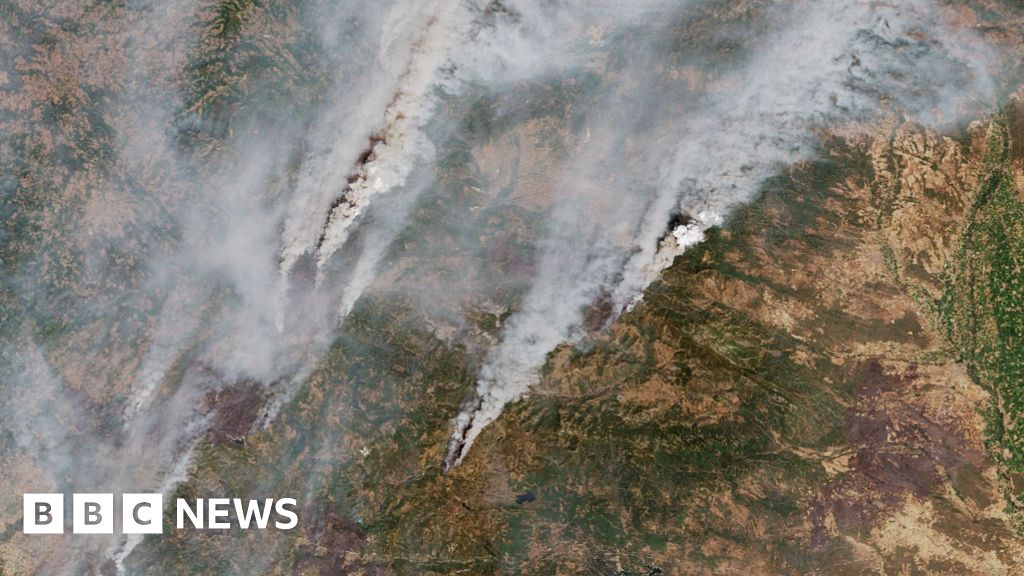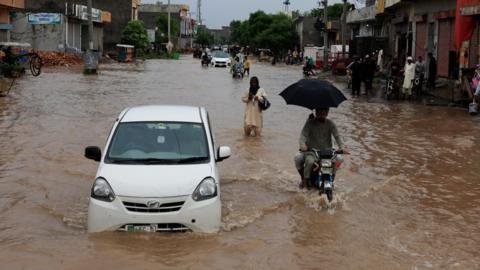As wildfires rage across Eastern Canada, emergency measures are in place and thousands are under evacuation orders. This year's wildfire season is shaping up to be one of the worst in Canadian history, with over 700 active fires reported by the Canadian Interagency Forest Fire Center. A staggering 18.5 million acres of forest have already been consumed by flames in 2025, positioning it as the second-worst year after 2023, when 31.3 million acres had burned by mid-summer.
Persistent hot and dry conditions are a significant factor in the escalating situation, with many regions experiencing drought and limited snowpack from the previous winter. This has left vegetation parched and highly susceptible to ignition. The provinces of Saskatchewan and Manitoba are currently facing the most severe fire activity this season, with Saskatchewan's Shoe fire alone spanning an astonishing 1.4 million acres, even exceeding the size of the Grand Canyon National Park.
However, a recent shift in weather has brought welcome rain to Saskatchewan and Manitoba, reducing the risk of new fire outbreaks and curbing existing ones, according to Brian Proctor, a meteorologist with Environment Canada. Meanwhile, Newfoundland and Labrador are now experiencing their own wildfire challenges, with several active fires in areas where they usually do not occur.
St. John's, the capital of Newfoundland, and surrounding regions are contending with dry conditions akin to the more fire-prone Prairies. The wildfires are affecting what is known as the "wildland-urban interface," close to residential areas where flammable vegetation is present. In response, a state of emergency has been declared, along with heat warnings across multiple regions.
Meanwhile, authorities are taking further precautions in Newfoundland and Labrador, where Premier John Hogan announced a ban on outdoor burning and a restriction on off-road vehicle use in forested areas, aimed at preventing any accidental ignitions. Though there is no direct evidence tying off-road vehicles to the fires, Hogan emphasized the need for caution. Violations of the new restrictions will incur penalties.
While British Columbia faces rising fire activity, particularly on Vancouver Island, Quebec stands as an exception this year, largely spared from destructive wildfires due to favorable wet weather earlier in the season. The danger continues as the wildfire season could extend into the fall, raising concerns across the nation about what lies ahead.
Persistent hot and dry conditions are a significant factor in the escalating situation, with many regions experiencing drought and limited snowpack from the previous winter. This has left vegetation parched and highly susceptible to ignition. The provinces of Saskatchewan and Manitoba are currently facing the most severe fire activity this season, with Saskatchewan's Shoe fire alone spanning an astonishing 1.4 million acres, even exceeding the size of the Grand Canyon National Park.
However, a recent shift in weather has brought welcome rain to Saskatchewan and Manitoba, reducing the risk of new fire outbreaks and curbing existing ones, according to Brian Proctor, a meteorologist with Environment Canada. Meanwhile, Newfoundland and Labrador are now experiencing their own wildfire challenges, with several active fires in areas where they usually do not occur.
St. John's, the capital of Newfoundland, and surrounding regions are contending with dry conditions akin to the more fire-prone Prairies. The wildfires are affecting what is known as the "wildland-urban interface," close to residential areas where flammable vegetation is present. In response, a state of emergency has been declared, along with heat warnings across multiple regions.
Meanwhile, authorities are taking further precautions in Newfoundland and Labrador, where Premier John Hogan announced a ban on outdoor burning and a restriction on off-road vehicle use in forested areas, aimed at preventing any accidental ignitions. Though there is no direct evidence tying off-road vehicles to the fires, Hogan emphasized the need for caution. Violations of the new restrictions will incur penalties.
While British Columbia faces rising fire activity, particularly on Vancouver Island, Quebec stands as an exception this year, largely spared from destructive wildfires due to favorable wet weather earlier in the season. The danger continues as the wildfire season could extend into the fall, raising concerns across the nation about what lies ahead.





















